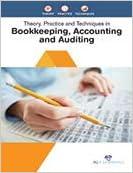Question
Cleaning up your inventory its like when your parents asked you to clean your room! Most people dont like clutter and mess but it is
Cleaning up your inventory its like when your parents asked you to clean your room!
Most people dont like clutter and mess but it is a normal human tendency. Inventory is like leaving a bunch of dirty dishes in the sink, or accumulating stuff in your basement or garage. Its also like having a messy room of stuff you dont wear that often. Every once in a while, it is good to have a good old fashioned garage sale or just clean up and throw some stuff away that is just taking up space.
Its no different in business. Many businesses have old inventory just laying around waiting for the right buyer. Does it make sense to keep your money tied up in this old inventory or to sell it and move on? Most successful businesses will keep a bare minimum of stale stock on hand and then discount the rest to get it moving. This frees up cash flow and also lowers the expensive carrying costs of old inventory. So which items do we clean up first? Which items will we sell potentially for a loss just to free up cash and improve the inventory turnover?
- Start with the oldest 10% of your inventory why is it still here? Are you hoping for a moon shot? Are you just waiting for that 1 in a million customer to pay your price? If it really is dead inventory and you are just afraid to admit it, its time to sell it as clearance.
- Look at your low margin items. If your average gross profit margin (gross profit/sale price) for your business is 45% and you have a bunch of inventory that averages 10% sitting around, it is probably time to clear some of these items to free up cash. Why are you keeping the low margin items? Does it really make sense? Do you have too many of them? Can you clean up your inventory and improve your turnover by discounting these items? The goal is to slash the number of low margin items in inventory and to only buy items that are moving quickly. In the long run, this will improve your finances tremendously.
Inventory should not grow faster than sales!
- Assume you have $100,000 of inventory that you turn once per year. This means your sales are $100,000 per year. If you increase your inventory to $150,000 and you sell $150,000 does this mean your business is growing or suffering? Explain why.
- What if you increase your inventory to $150,000 and sell $125,000 per year? Did your business grow or is it getting worse? Please explain.
- What if you increase your inventory to $150,000 and sell $250,000 per year? Did your business grow or is it getting worse? Please explain
- Circle the scenario that makes the most sense regarding inventory turnover
- $50,000 inventory that turns 2X per year
- $100,000 inventory that turns 1X per year
- From a business standpoint, explain why you picked your answer above.
Step by Step Solution
There are 3 Steps involved in it
Step: 1

Get Instant Access to Expert-Tailored Solutions
See step-by-step solutions with expert insights and AI powered tools for academic success
Step: 2

Step: 3

Ace Your Homework with AI
Get the answers you need in no time with our AI-driven, step-by-step assistance
Get Started


